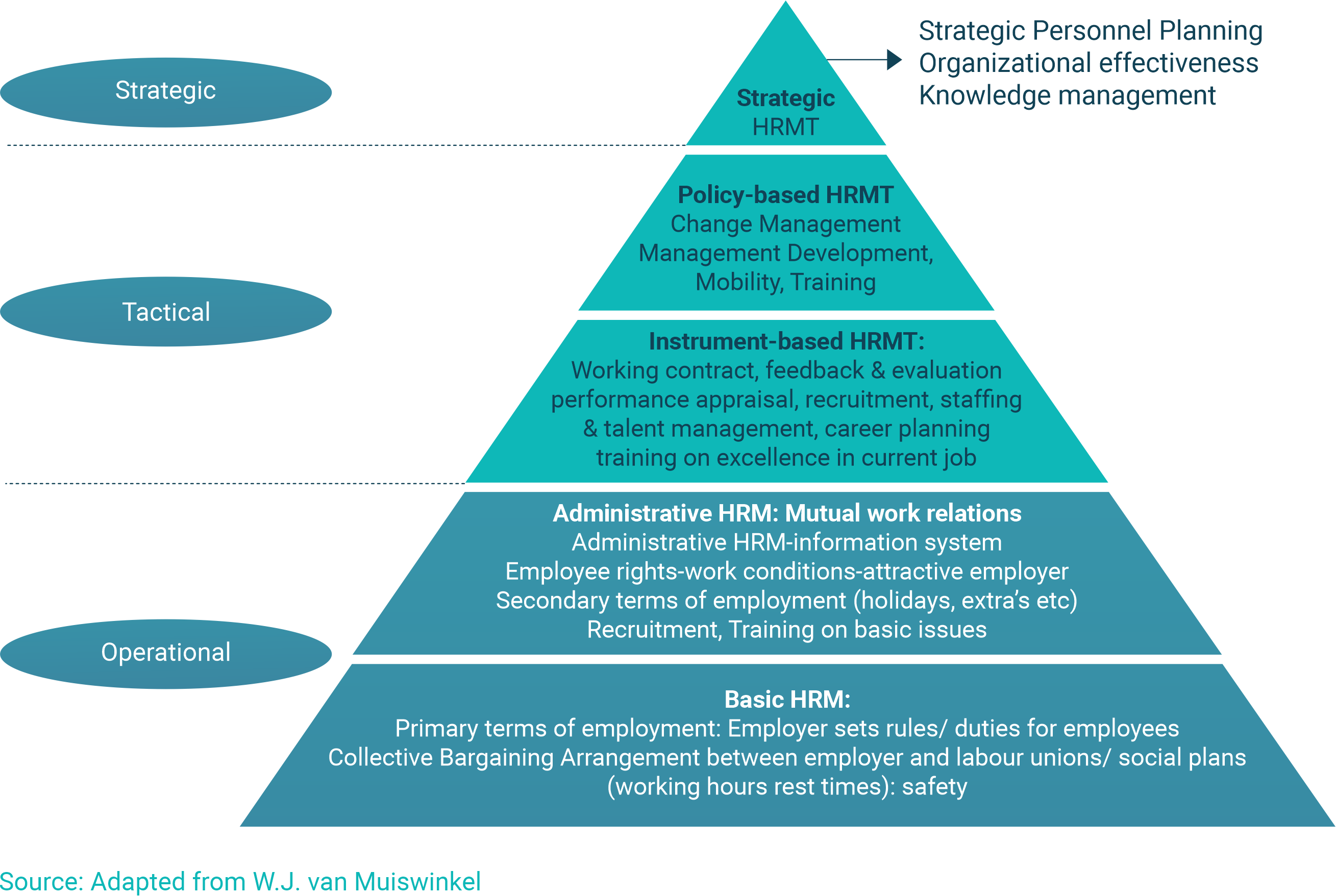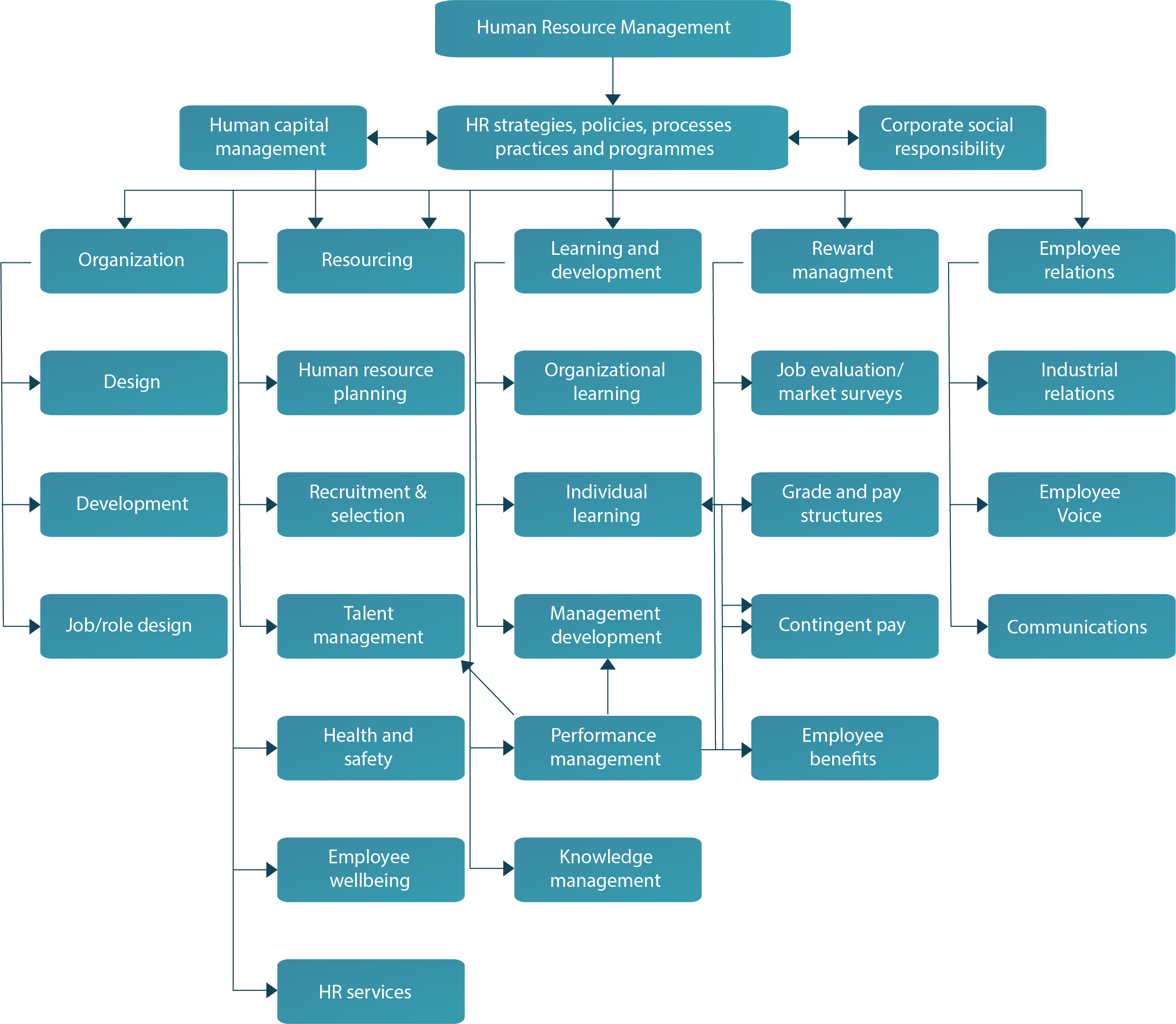13.9 Human resources management: a policy package#
13.9.1 HRM defined#
HRM (HRM) is a strategic, integrated and coherent approach to the employment, development and well-being of the people working in organizations. A strategic approach focuses on long-term people issues within the context of the NSO’s goals and the evolving nature of its work.
HRM (HRM) is the practice of recruiting, hiring, deploying and managing an organization’s employees. An organization’s human resource department (HRD) is usually responsible for creating, putting into effect and overseeing policies governing workers and the organization’s relationship with its employees.
Box 11: HRD as an enabler for innovation - Statistics Mongolia
The Human Resources Development Policy of NSOM focuses on outreach, training and retention of staff. NSOM developed a training programme for staff members working at central and territorial statistical offices, including various modules at different levels, from basic to advance. The personnel of NSOM included a large number of relatively experienced staff: 33% having 0-5 years of service, 28% having 6-10 years of experience, 19% having 11-15 years of experience, 8% having 16-20 years of experience, 12 % above 21 years of experiences. However, most employees (66%) have a bachelor’s degree, 31% have a master’s degree and 2% a PhD.
An estimated 90-100 students with majors in statistics, economics or demography graduate every year from three universities. A database of qualified individuals has been created to support outreach efforts when vacancies arise. Outreach efforts also include making available internships for statistics majors.
13.9.2 The objectives of HRM#
The objectives of HRM can be broken down into four categories:
Societal objectives Measures put into place that respond to the ethical and social needs or challenges of the organization and its employees. This includes legal issues such as equal opportunity, and equal pay for equal work, sexual harassment in the workplace.
Organizational objectives Actions taken to help ensure the organization’s efficiency, including increasing its effectiveness and capability and ability to change and manage change. This includes providing training, hiring the right number of employees for a given task or maintaining high employee retention rates.
Functional objectives Guidelines used to keep the HR functioning properly within the organization as a whole. This includes making sure that all of HR’s resources are being allocated to its full potential.
Personal objectives Resources used to support the personal goals of each employee. This includes offering the opportunity for education or career development as well as maintaining employee satisfaction.
13.9.3 Elements of an HRM system#
A Human Resources Management System (HRMS) brings together HR philosophies that describe the overarching values and guiding principles adopted in managing people. HR strategies define the direction in which HRM intends to go. HR policies provide guidelines defining how these values, principles and strategies should be applied and implemented in specific areas of HRM. HR processes comprise the formal procedures and methods used to put HR strategies and policies into effect. HR practices consist of the approaches used in managing people, and HR programmes that enable HR strategies, policies, and practices to be implemented according to plan.
A generic representation (🔗) of an HRM system is shown in Figure 18. Some of these elements have been discussed in the previous sections of this Chapter. An application to a national statistical organization presented in Chapter 1 of the HRMT Compilation of good practices from UNECE (2013) is shown in Figure 17.

Fig. 20 HRMS in a national statistical organization#

Fig. 21 Generic representation of an HRM system#
Office for National Statistics people and staff, ONS (🔗);
Management of Human Resources, Annual Report 2017-18, ABS (🔗);
Moving from introduction towards integration of new employees – objectives and methods at Statistics Norway, Chapter 11, HRM – Compilation and Good Practices in Statistical Offices, UNECE (2013) (🔗).




